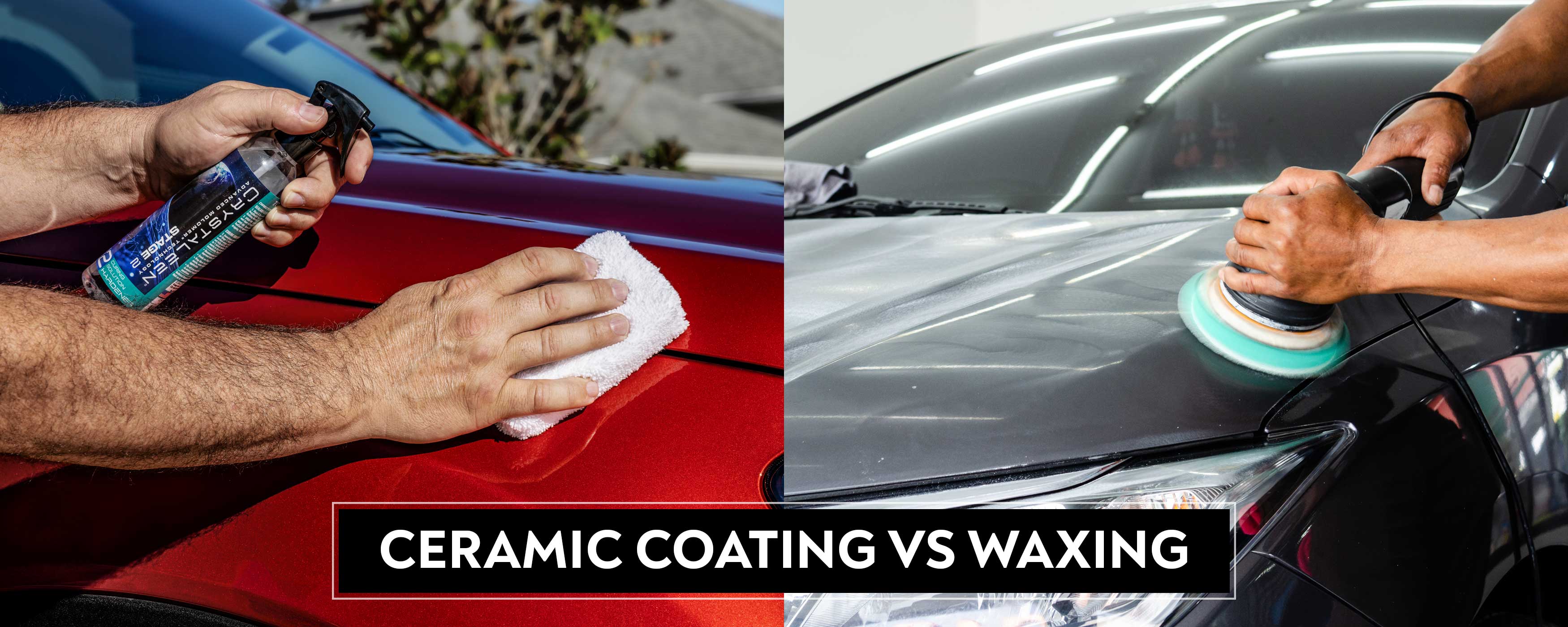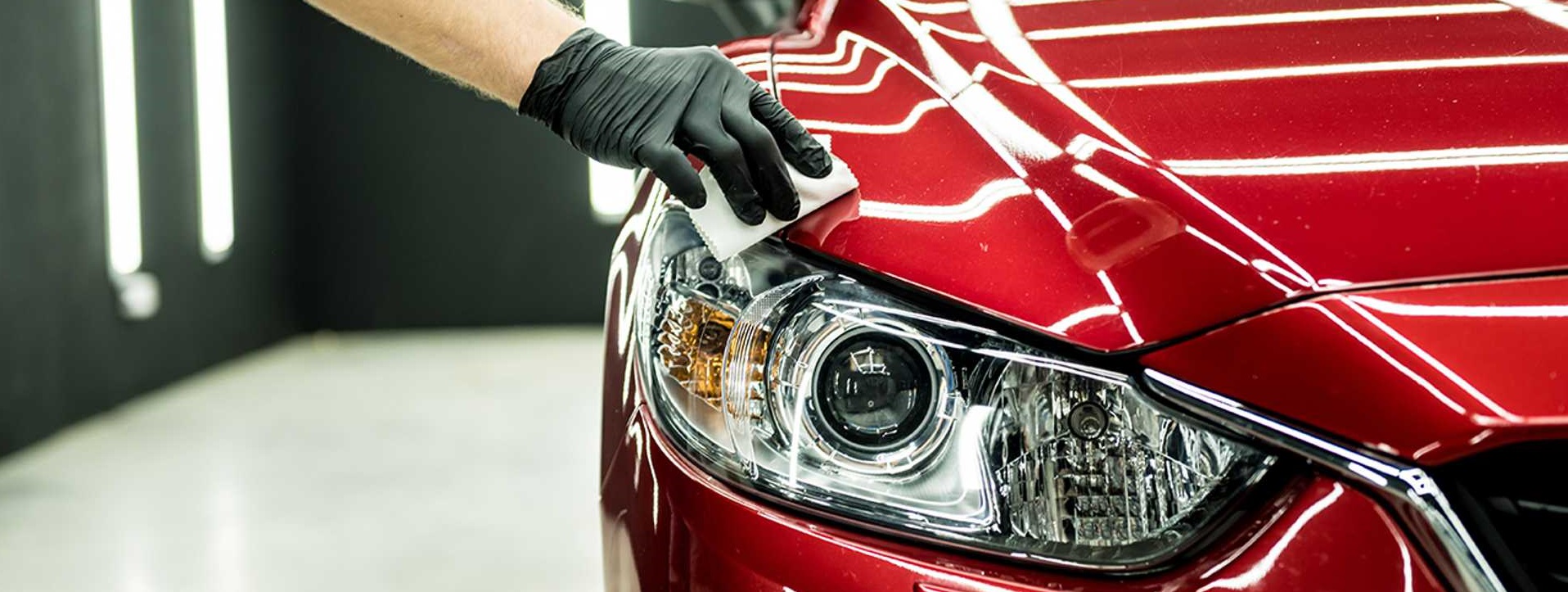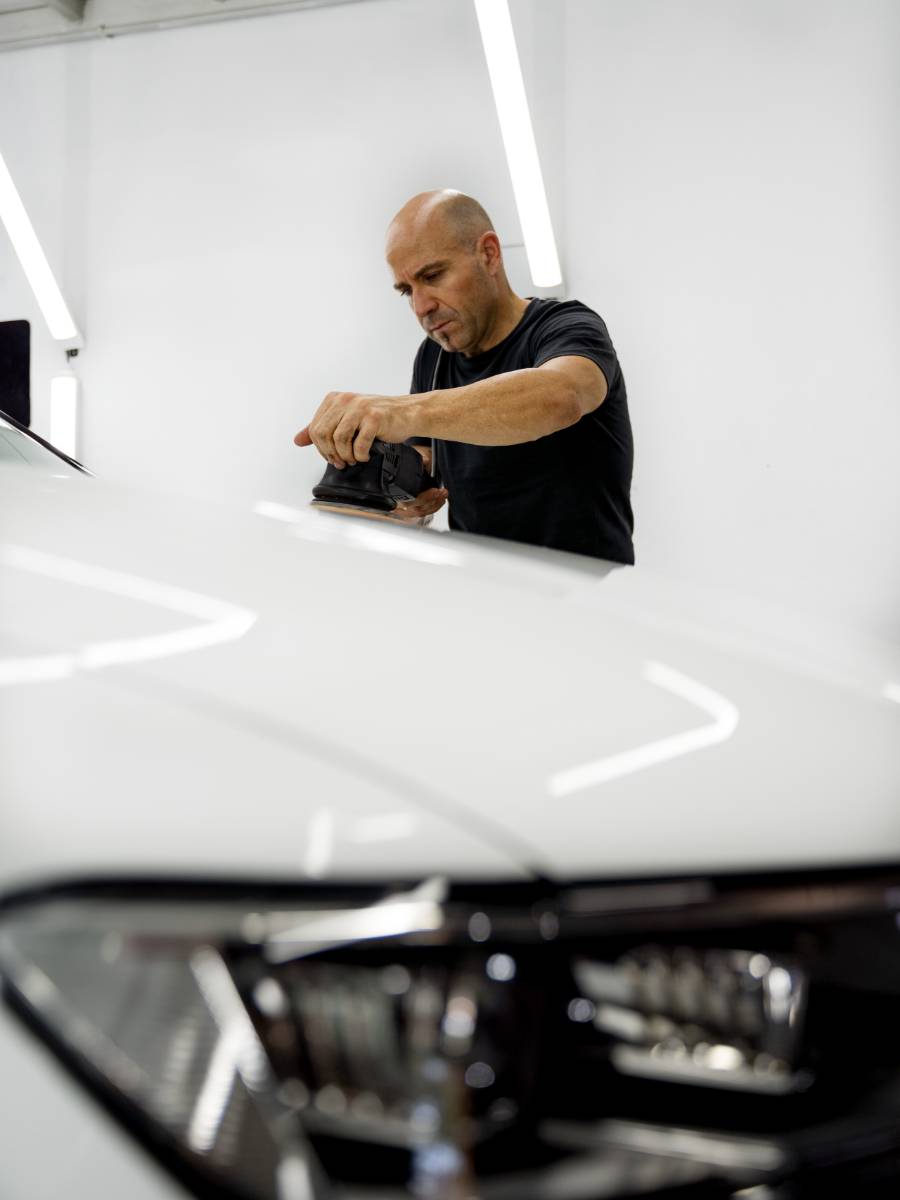Ceramic Coating for Cars: The Ultimate Solution for a Glossy Finish
Ceramic Coating for Cars: The Ultimate Solution for a Glossy Finish
Blog Article
Ceramic Coating vs. Typical Wax: Which Gives Much Better Long-Term Defense?
The argument between ceramic coverings and traditional wax for vehicle protection has actually gathered significant attention amongst vehicle enthusiasts and professionals alike. Ceramic finishes flaunt exceptional long life and resistance to environmental factors, yet the intricacy of their application increases questions concerning ease of access and functionality.
Review of Ceramic Finish
Ceramic covering has actually gotten considerable popularity amongst auto fanatics and detailers alike due to its innovative protective top qualities. This ingenious modern technology is developed to produce a durable, hydrophobic shield over a lorry's paint surface area, dramatically improving its resistance to ecological impurities such as dust, UV rays, and chemical stains. Unlike standard wax, which provides a short-term layer of security, ceramic layers bond at a molecular level with the paint, using lasting resilience-- commonly extending beyond two years with appropriate upkeep.
The application procedure involves thorough preparation of the automobile's surface area, consisting of cleansing and brightening to ensure optimal bond. When applied, the covering treatments to create a robust layer that not only adds depth and gloss to the paint but likewise streamlines upkeep. With its hydrophobic homes, ceramic coating enables water and dust to glide off even more quickly, lowering the frequency of washes and reducing the danger of swirl marks.
In addition, ceramic layers are offered in various formulations, allowing customers to pick items customized to their details demands and choices. Overall, ceramic finishing stands for a considerable improvement in paint protection innovation, delivering premium performance contrasted to standard choices.
Overview of Traditional Wax
Generally pertained to as a staple in vehicle care, wax works as a prominent option for those seeking an uncomplicated technique to improve and secure their lorry's paint - ceramic coating. Automotive wax commonly makes up natural ingredients, such as carnauba, or synthetic substances, developed to develop a safety layer on the surface of the paint. This layer not just enhances the car's gloss and shine but additionally offers an obstacle against ecological pollutants
The application of wax is generally straightforward, making it obtainable for both specialists and DIY fanatics. It can be applied by hand or device, permitting adaptability in the detailing process. As soon as applied, wax calls for a treating duration, after which it sets to create a safety shell. Wax is also understood for its capability to ward off water, advertising a beading impact that assists in the prevention of water areas and corrosion.
Nonetheless, while wax works for improving the visual allure of a vehicle, it is essential to note that the defense it uses may necessitate much more regular reapplication contrasted to alternative products, such as ceramic finishes. Overall, standard wax continues to be a favored option for those prioritizing simplicity of usage and immediate visual improvement.
Resilience and Longevity Contrast
While both ceramic finishings and standard wax deal safety advantages for automobile paint, their longevity and long life vary significantly. Traditional wax, generally made from natural carnauba or artificial polymers, normally supplies a protective layer that lasts around 3 to six months. This fairly brief lifespan necessitates normal reapplication to keep optimum defense.
On the other hand, ceramic coatings are crafted from innovative nanotechnology, creating a covalent bond with the paint surface area. This results in a robust, hydrophobic layer that can withstand for two to five years, depending on the item and ecological problems. The remarkable sturdiness of ceramic finishes is connected to their chemical framework, which uses improved resistance to scratches, UV rays, and oxidation.

Defense Versus Ecological Aspects
Shielding a car's paint from environmental factors is vital for keeping its appearance and worth over time. Cars are frequently subjected to a selection of elements, including UV rays, bird droppings, tree sap, acid rainfall, and road crud, all of which can jeopardize the honesty of the paintwork.
Ceramic coverings provide a robust defense against these ecological assailants. Unlike traditional wax, which can degrade swiftly under UV exposure, ceramic coatings develop a long lasting, hydrophobic layer that stands up to the unsafe impacts of sunshine and ecological toxins. This innovative innovation develops a chemical bond with the lorry's surface area, offering exceptional defense that lasts for several years, even in severe conditions.
In contrast, ceramic coatings keep their protective high qualities longer, dramatically lowering the risk of paint damages and ensuring that the vehicle preserves its visual allure. As an outcome, ceramic finishings are progressively identified as the premium option for long-term defense against environmental elements.
Application and Upkeep Differences
The methods of application and succeeding maintenance for ceramic layers and conventional wax vary substantially, influencing the overall user experience and efficiency of each item. Ceramic layers call for a more complex application process, commonly including surface preparation that consists of cleaning, decontaminating, and polishing the automobile. Once the surface prepares, the ceramic covering is used in a controlled environment, typically requiring professional know-how to make sure appropriate curing and bonding to the paint.

While both products enhance vehicle appearance, the longer-lasting security used check my site by ceramic layers might warrant their first investment, in spite of the more demanding application process. On the other hand, standard wax stays a prominent option for those looking for a less complex, albeit temporary, remedy.

Verdict
In conclusion, ceramic finishings demonstrate significant benefits over typical wax in regards to longevity and environmental defense. With a lifespan extending two to 5 years and premium resistance to UV rays, dust, and chemical discolorations, ceramic coatings offer an extra reliable service for lasting automobile maintenance. Although the application procedure may need specialist proficiency, the resulting expense financial savings and decreased frequency of reapplication emphasize the worth of ceramic finishings for those looking for optimum car protection.
The debate in between ceramic coverings and traditional wax for automobile security has amassed significant focus among auto lovers and professionals alike. Unlike typical wax, which supplies a temporary layer of security, ceramic finishes bond at a molecular level with the paint, offering lasting durability-- commonly prolonging past two years with correct maintenance.
While both ceramic finishings and typical wax deal protective benefits for auto paint, their resilience and long life differ dramatically. For vehicle lovers looking for long-term security, ceramic layers present an engaging benefit over traditional wax items.
In verdict, ceramic finishings demonstrate substantial advantages over typical wax in terms of longevity and environmental security.
Report this page